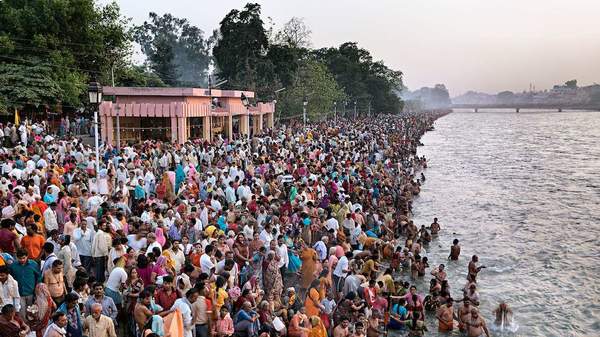Overview
Of all of Earth's natural resources, it is water that is perhaps the most precious. We need it to drink; to grow food; to bathe in. It's the key ingredient in industry and agriculture. It's part of recreation, sport and religious practices all around the world. It drives our entire planet, nourishing every living thing. And so often, we take it for granted. It's a finely tuned balance, but one that can easily be thrown off its axis.
Watermark isn't your typical environmental doco, although it makes the need for environmentalism clear. Directed by Canadian documentarian Jennifer Baichwal along with photographer Edward Burtynsky, the film consists of contrasting scenes and interviews, shot in every imaginable corner of the globe. Ranging from images of everyday domesticity to events of staggering scale, each sequences sheds further light on the importance of H2O.
Using a variety of techniques including aerial photography, slow motion and time-lapse, the sorts of visuals the filmmakers capture are nothing short of astounding. In the opening few minutes, for example, we see millions of tonnes of water crashing through giant floodgates as part of the annual silt release at the Xiaolangdi Dam in China. One abrupt cut later, and we're looking at a desert; a grey, dried-out wasteland that was once the Colorado River. The juxtaposition could hardly be more striking.
Over the next 90 minutes we're taken all around the world. On a single day in India, 30 million Hindus cleanse their sins in the holy Ganges. At Huntington Beach in California, the world's best surfers compete for fortune and fame. On the edge of the East China Sea, abalone farmers tie their floating houses together; the idea is that if a typhoon severs one anchor, the rest hold the structure in place. Elsewhere canals and tributaries weave mesmerising patterns across the land.
Yet while the imagery is beautiful, its implications are often dire. In Bangladesh, toxic runoff mixes with river water. Vast areas of the world are ravaged by drought, while at the frozen polar ice caps the sea levels start to rise. Scientists studying ice in Greenland provide the film with its most explicit statements about mankind's effect on our plant. But we also hear from farmers, fisherman and leather tanner in the developing world, communities that feel the impact of environmental changes firsthand.
Information
When
Saturday, July 5, 2014 - Sunday, July 13, 2014
Saturday, July 5 - Sunday, July 13, 2014
Price
$11-16-
Event Type
